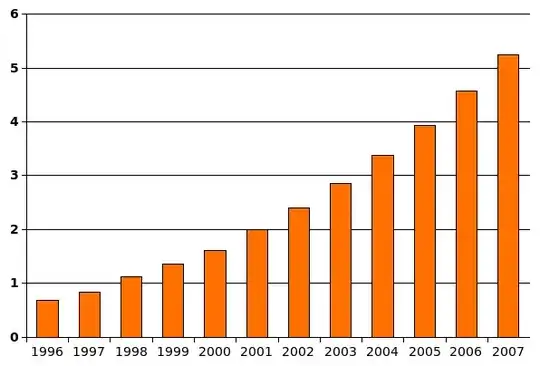First of all if you look at the original data, things are way more suspicious. Why are they suspicious? Because most mental illnesses are actually also increasing dramatically during that period.
One can speak about epidemiology of a single disease, but when there are many diseases with the same trend, producing that graph is clearly cherry-picking the data to show that there must be something wrong with autism in particular!
So this leads us clearly to systematic causes, like improved diagnostics, changed diagnostic criteria and age at which the diagnosis can be produced, etcetera.
Obviously this doesn't disprove that autism has increased. It might have increased as well, but it's hard to say in a situation in which a proper study hasn't been conducted.
Let me quote Wikipedia:
- More children may have autism; that is, the true frequency of autism may
have increased.
- There may be more complete pickup of autism (case finding), as a result
of increased awareness and funding.
For example, attempts to sue vaccine
companies may have increased
case-reporting.
- The diagnosis may be applied more broadly than before, as a result of
the changing definition of the
disorder, particularly changes in
DSM-III-R and DSM-IV.
- Successively earlier diagnosis in each succeeding cohort of children,
including recognition in nursery
(preschool), may have affected
apparent prevalence but not incidence.
- A review of the "rising autism" figures compared to other disabilities
in schools shows a corresponding drop
in findings of mental retardation.
The article also contains a pretty damning conclusion:
The reported increase is largely attributable to changes in diagnostic practices, referral patterns, availability of services, age at diagnosis, and public awareness.
The following studies are referenced (emphasis mine):
More children are being diagnosed with ASDs today than in the past. Some of the prevalence increase is undoubtedly attributable to changing diagnostic tendency; however, there are insufficient data to determine whether this can explain the entire increasing trend.
—source
The prevalence of autism in metropolitan Atlanta in 1996 for children aged 3 to 10 was 3.4 per 1000. This overall rate is 10 times higher than rates from 3 other US studies that used DSM-III or ICD-9 criteria to identify children with autism and pervasive developmental disorders in the 1980s and early 1990s. Our rate is closer to that found in a recent prevalence study in Brick Township, New Jersey, that used DSM-IV criteria (4.0 per 1000 for autistic disorder and 6.7 per 1000 for the entire autism spectrum). Our findings also are similar to rates from several recent European studies that used ICD-10 or DSM-IV criteria (2-6 per 1000 for autism).
—source
